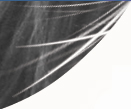A GOOD IDEA HAS TO GIVE WAY TO A BETTER IDEA
One of my training cornerstones is the philosophy that a good idea has to give way to a better idea. It makes every sense, it encourages continuous study and effort to improve, and it helps avoid polarisation between different ‘schools’ of thought. I never think you can't do something because it hasn't been done before. I believe it is vital we keep an open mind and search for better ideas, especially when better might mean more humane as well as more efficient.
UNIQUE OR UNAWARE
However we suffer in the horse world from a plethora of unique methods, often offered as better ideas, which are in fact ideas that have been around for many years. A trainer that invents a unique method as a result of their limited knowledge is unfortunately unlikely to fully understand either the advantages or the disadvantages of their method. I believe that even good ideas have both advantages and disadvantages, though obviously the former should vastly outweigh the latter, and that it is only sensible to search for the disadvantages in what we do. If a trainer has studied their subject they can make use of knowledge accumulated over many years, building on the advantages and avoiding the disadvantages. This is the great benefit of training ‘classically.’
OTTO LORKE - GENIUS
It is also the great strength of the modern era of dominant German dressage trainers and riders. Their success is built on the accumulated knowledge and teamwork leading from the better ideas and genius of just one man, Otto Lorke.
He trained the great master trainers Bubi Gunther, Willie Schulteis, Joseph Neckermann and Herbert Rehbein, and they in turn trained Harry Boldt, Reiner Klimke and the majority of todays top trainers including Conrad Schumacher and Jean Bemelmans. They bring a huge combined experience to their work and know the advantages and disadvantages of their methods inside out.
NOT THE FIRST TIME
There are many examples of things being reinvented: For example Monty Roberts’ ‘Join up’ is very much part of the 'acceptance' I have been talking about in my blogs. What is so interesting is that my father, Dick Micklem, (see my last blog) learnt the equivalent of ‘Join Up’ from Argentine polo players just after the second world war – so he was doing this in the late1940’s and there are many people who can testify to this. At the same time he also learnt the equivalent of what is currently known as the Dr Cook crossover strap, so that has also been around for a very long time as well. I regularly use an improved version of this strap as part of my Micklem bridle.
The Micklem bridle is my own best better idea! It won the innovation award at this year’s BETA International in Birmingham, and it offers a very real alternative both to tight cranked up cavesson nosebands and to dropped nosebands that fit very low on the nose. Both of these nosebands are in my opinion good ideas that need a better idea.
NOSEBAND PROBLEMS
Let me briefly explain: The horse’s top jaw is substantially wider than the lower jaw. (Have a look and external feel of your own horse’s teeth today.) Therefore a tight cavesson or flash noseband can squash the delicate tissue inside the mouth, between the protruding outside edge of the top jaw molar teeth on one side and the noseband on the other. Especially with a horse that tries to open the mouth this tends to cause bruising and/or laceration inside the mouth, with the result of discomfort and pain that will probably hinder acceptance of the bit.
With the low dropped noseband there is the same story of obvious potential for discomfort and pain. It is so easy to damage the delicate two ends of the nose bones, which are only a quarter of an inch wide at maximum and should never be subjected to strong pressure. The Micklem bridle avoids the disadvantages of both the dropped and cavesson nosebands, as well as being a supremely versatile bridle.
CHECK AND CHANGE
The important thing to remember is that uncomfortable nosebands, bits and saddles can all affect the degree of acceptance offered by your horse. Therefore these things should be checked and double checked on a continuous basis. Next week I will explain how you can make one other 'check and change' that can make a huge improvement to acceptance. Happy days…William
[ back to Articles ]
|


